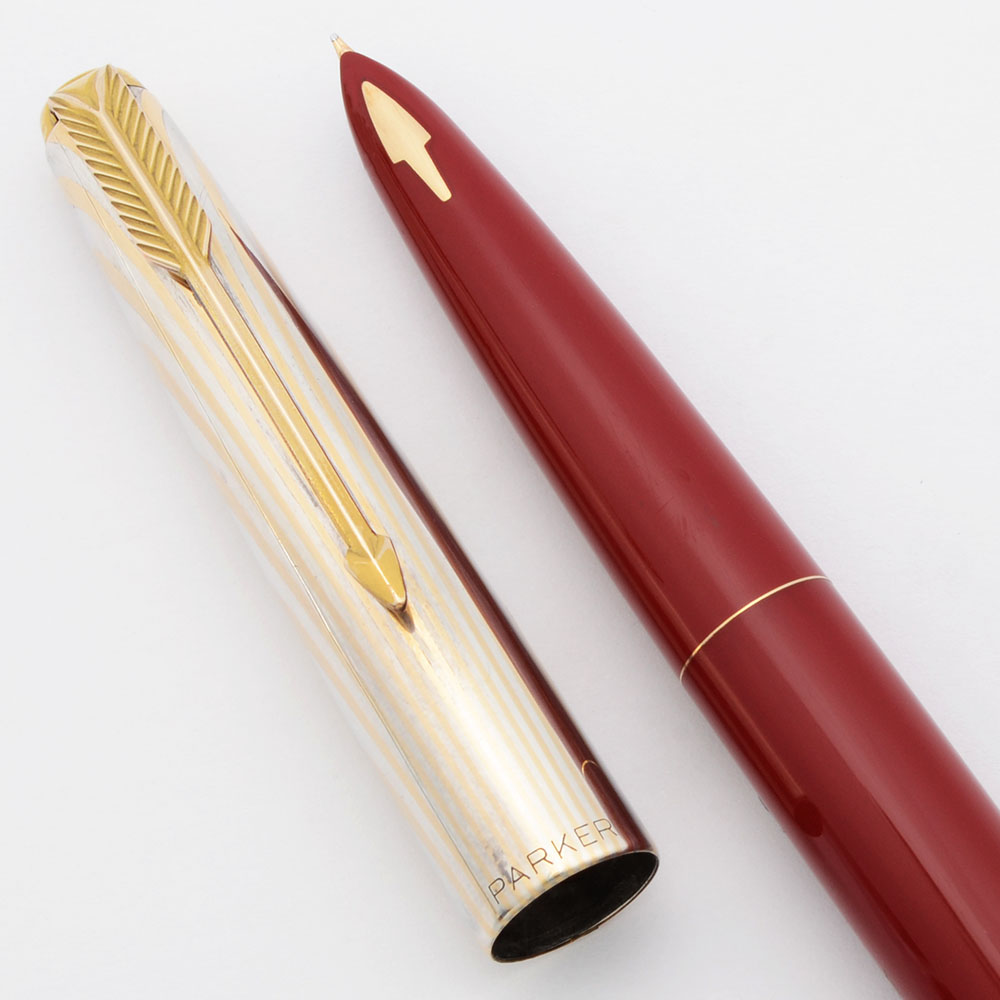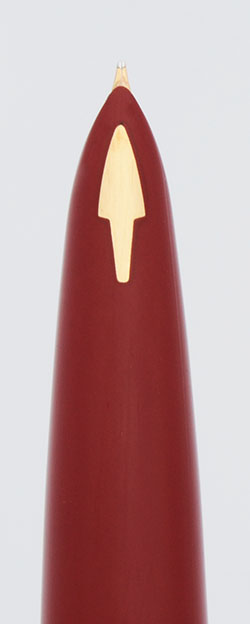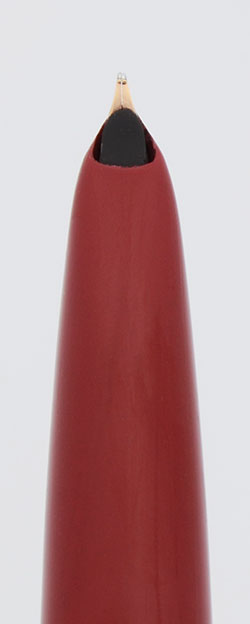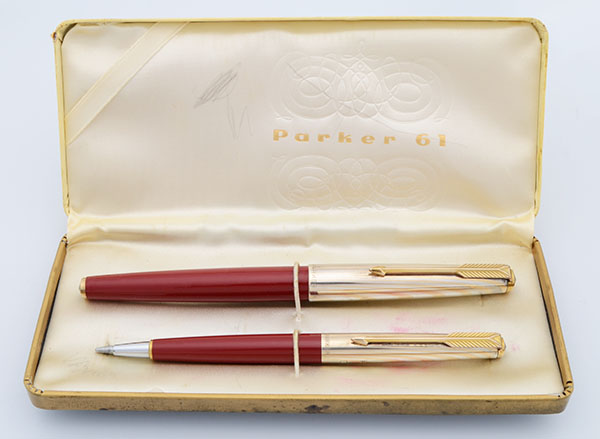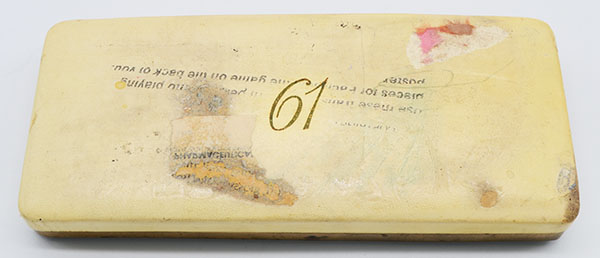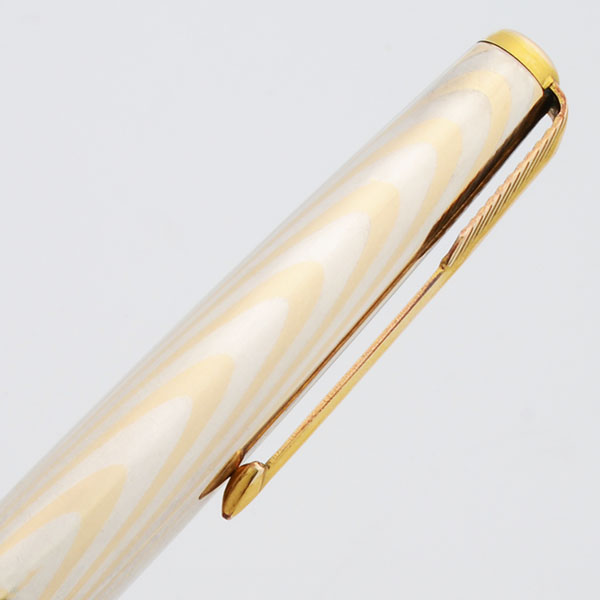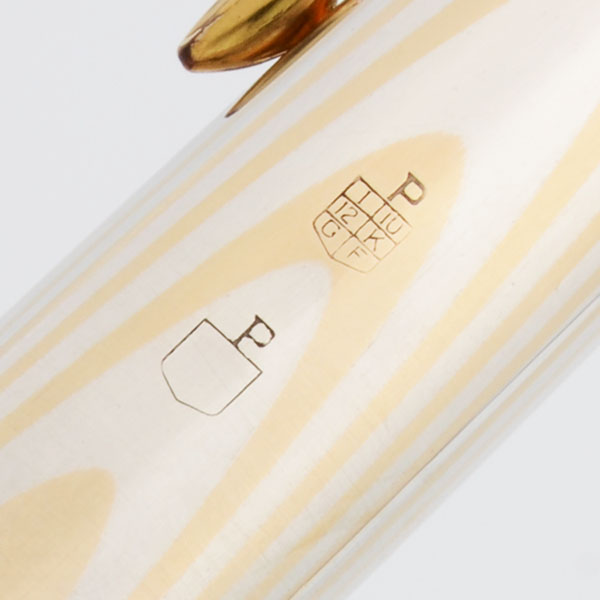Product Description
Type Fountain pen and pencil set, with unique filling system for the pen
Product Name Parker 61 "Heritage" edition
Manufacturer and Year Parker, USA -- 1957-9 (Mark II model)
Length The pen measures 5-1/2" long, and the pencil is 4-7/8".
Filling System The fountain pen uses a capillary filling system, unique to this model. It's been thoroughly cleaned and tested, filling system guaranteed. See further details below. The pencil uses Parker's abandoned "Liquid Lead" technology, which essentially means that it doesn't work because you can't get the refills. Some people have converted these pencils to ballpoints with a "D1" type refill; the caveat here is that the tip does not retract, so you wouldn't want to carry it loose in a pocket, because it will leak.
Color Rage Red barrel, with 1/10 12k yellow gold-filled arcing "rainbow" swirls alternating between silver arcs. There is a shield imprint on the cap that reads "1/10 12K GF". Each end of the pen has a pearlescent jewel inset, and the pencil cap has the same pearlescent jewel.
Nib Fine 14k nib is smooth, with good tipping material.
Condition Excellent condition in box. No cracks, chips, scratches, or staining. The fountain pen barrel has light handwear and microscratching. The teflon coating for the filling system looks great. There is brassing along the sides of the clip. The cap has some small shallow dents near the top. Both jewels look great. The pencil is in similar condition, with just light handwear and microscratching, and some brassing on the sides of the clip. The pearlescent jewel is perfect. As mentioned above, the pencil is non-functional.
You'll need to be patient when you fill the pen for the first time, as it takes a few minutes or so for the capillary system to suck in enough ink to get started.
A word or two about the Parker 61 Capillary Filling System. If you are not familiar with this unique design, you should read this.
Here is how you fill a Parker 61, and an insight into how the pen actually works. Unscrew the barrel and stick the back end of the pen (aka the capillary cell) into a bottle of ink. Wait a few minutes (probably more like a half hour when you first start one of these older used ones), and let the ink wick up into the capillary cell. The cell contains a sheet of perforated plastic that has been given a 3-D pattern resembling tire tread, and rolled up. The perforations allow ink to seep between the rolled-up layers, and the tread pattern maintains space between the layers. In the middle of this tube, which runs the entire length of the capillary cell, is the feed. To keep things clean, the capillary cell has on a coating of teflonon the outside that is intended to shed ink as the user withdraws the pen from the ink bottle, leaving very little ink to be wiped off. The end of the barrel contains a spring-loaded piece which covers the open end of the capillary tube, but still allows it to vent.
